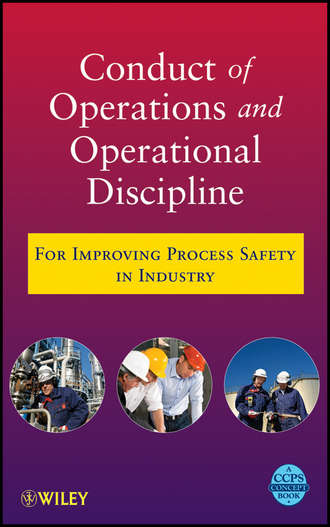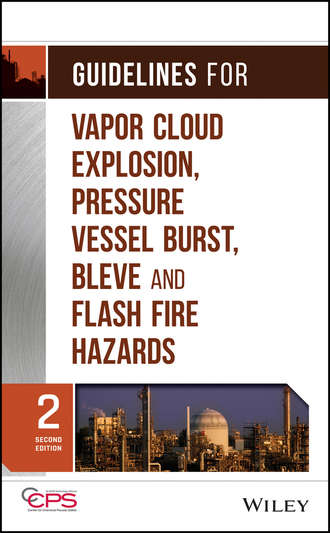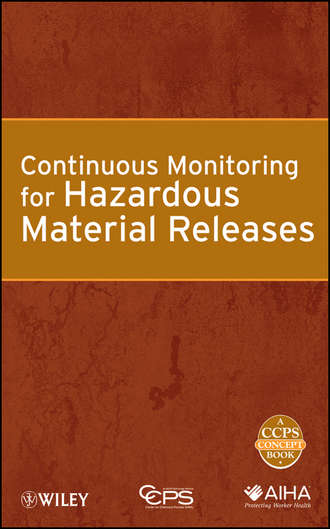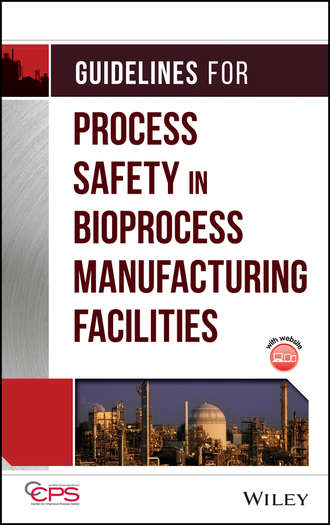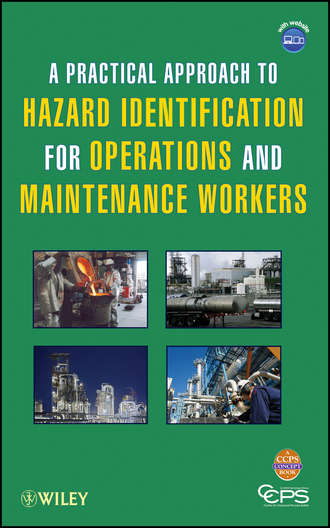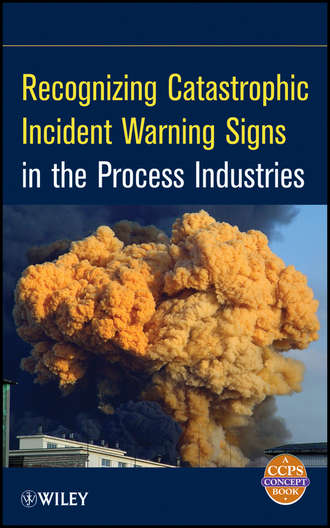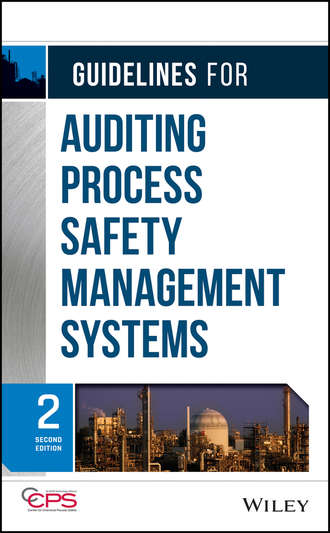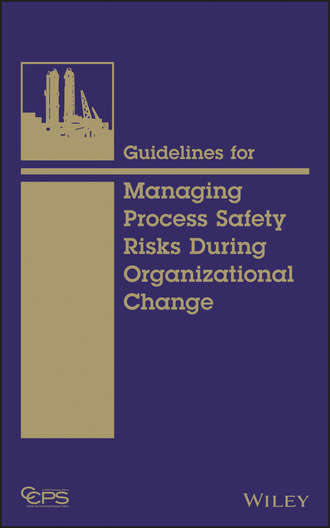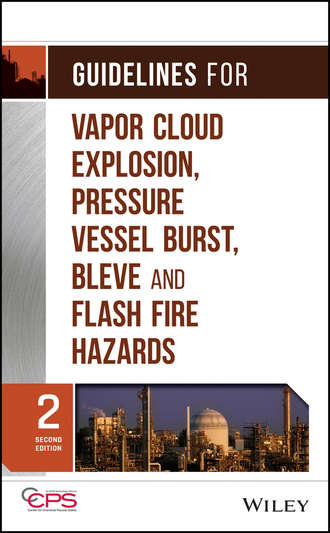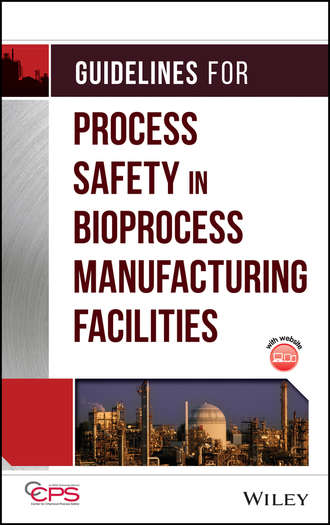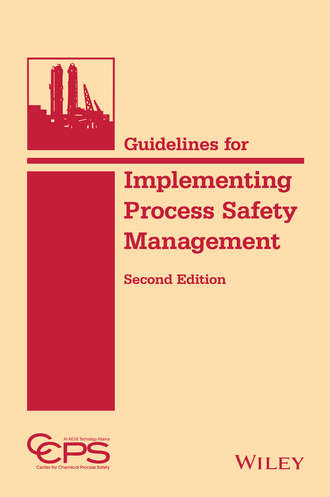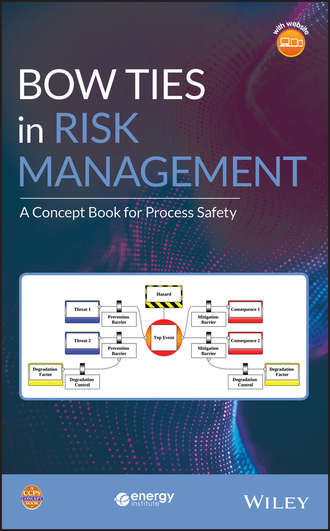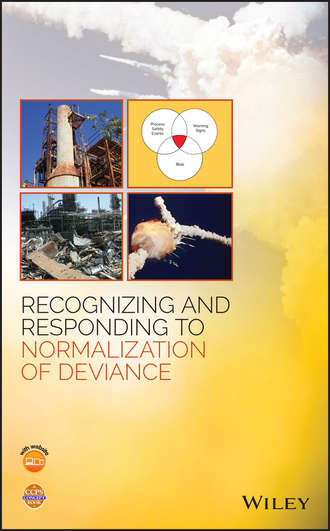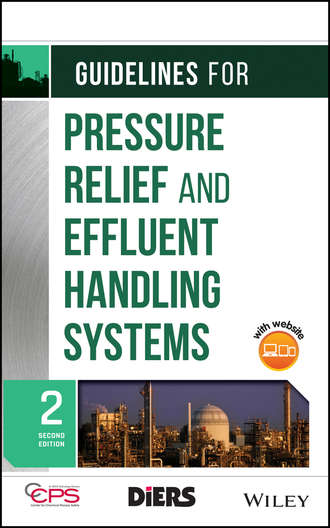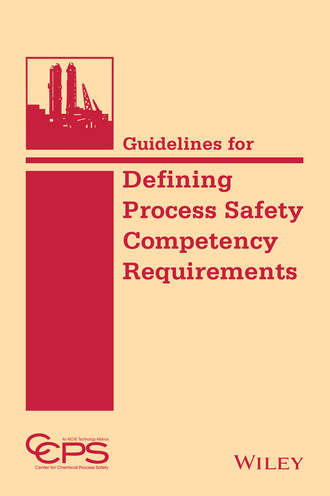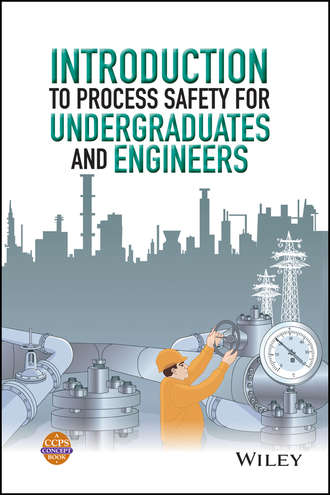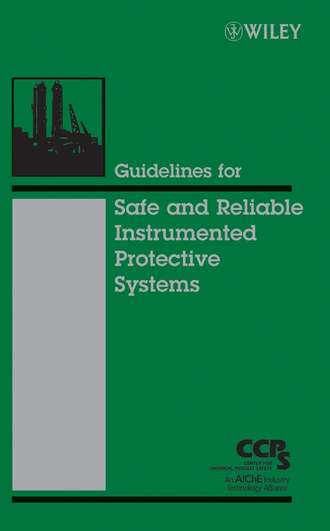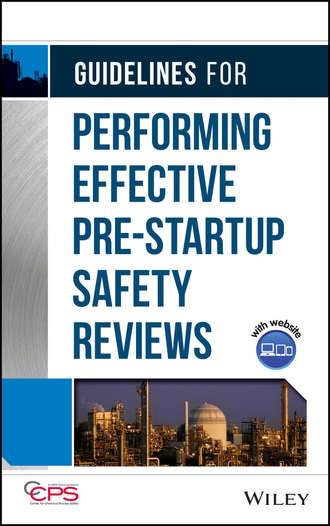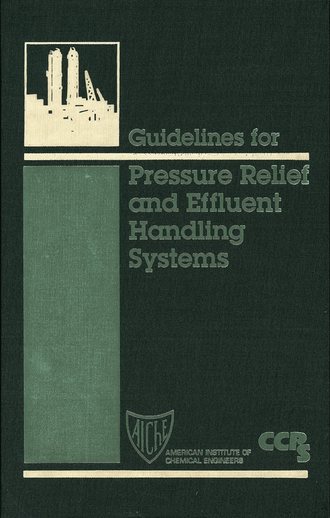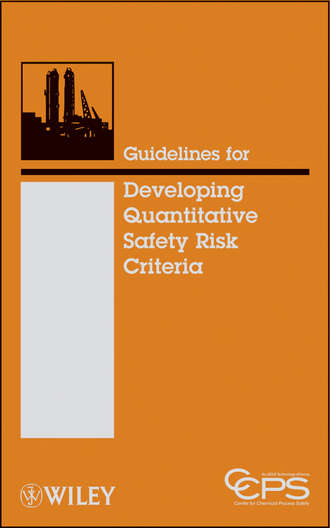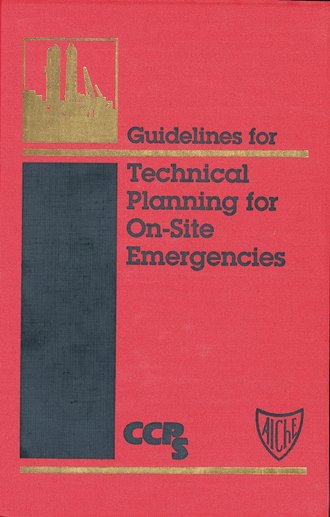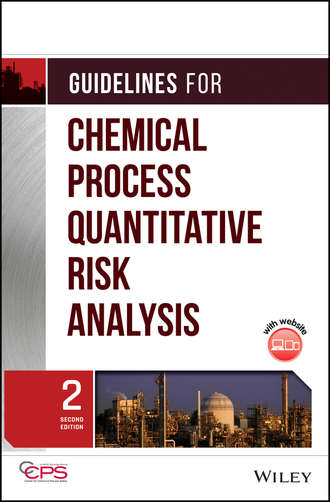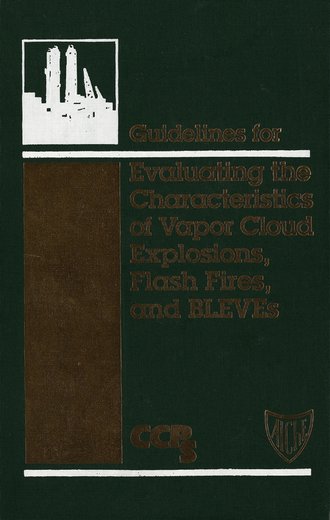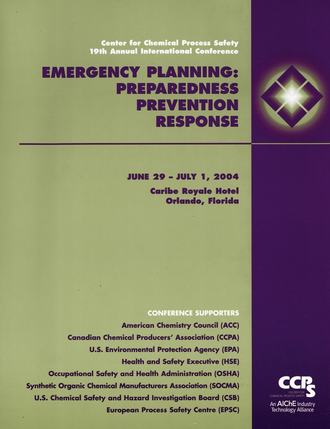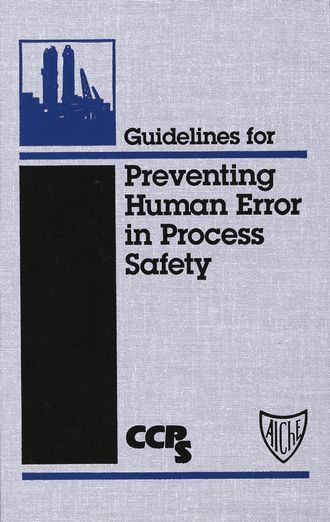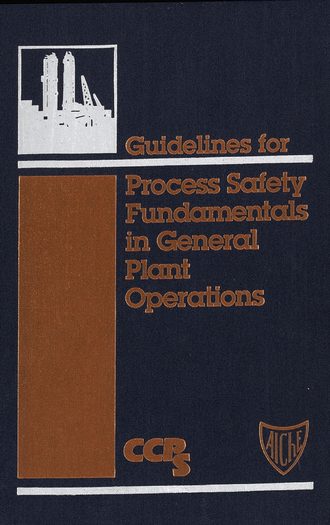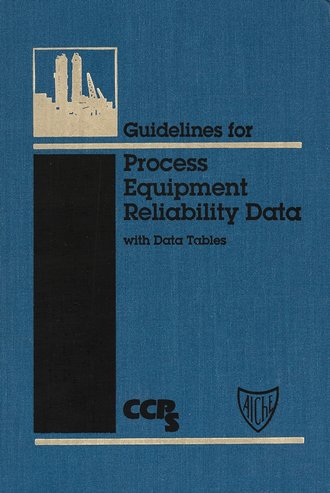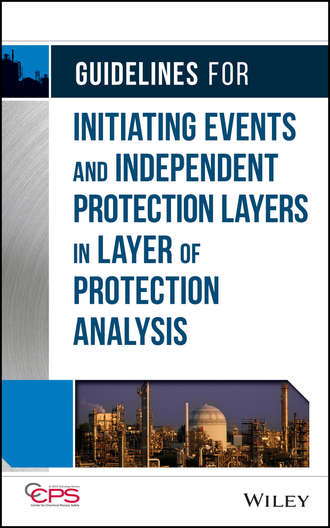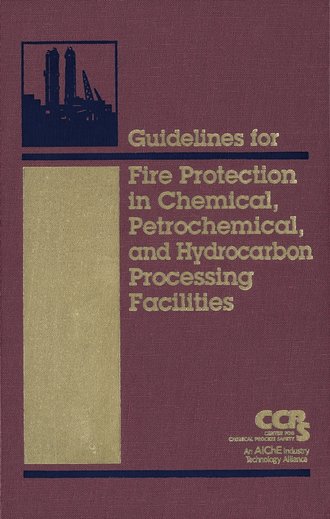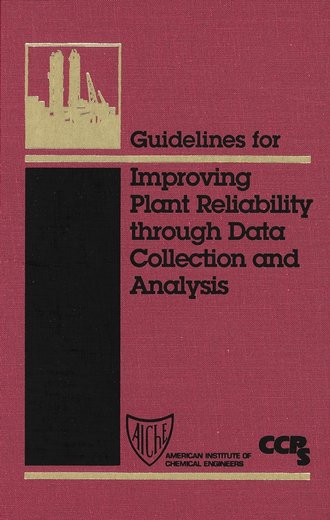Автор: CCPS (Center for Chemical Process Safety)
Conduct of Operations and Operational Discipline. For Improving Process Safety in Industry
CCPS (Center for Chemical Process Safety)
Process safety management (PSM) systems are only as effective as the day-to-day ability of the organization to rigorously execute system requirements correctly every time. The failure of just one person in completing a job task correctly just...
Guidelines for Vapor Cloud Explosion, Pressure Vessel Burst, BLEVE and Flash Fire Hazards
CCPS (Center for Chemical Process Safety)
This guide provides an overview of methods for estimating the characteristics of vapor cloud explosions, flash fires, and boiling-liquid-expanding-vapor explosions (BLEVEs) for practicing engineers. It has been updated to include advanced...
Continuous Monitoring for Hazardous Material Releases
CCPS (Center for Chemical Process Safety)
Whether occurring accidentally or through acts of terrorism, catastrophic chemical releases must be identified early in order to mitigate their consequences. Continuous sensor monitoring can detect catastrophic chemical releases early enough to...
Guidelines for Process Safety in Bioprocess Manufacturing Facilities
CCPS (Center for Chemical Process Safety)
This book helps advance process safety in a key area of interest. Currently, no literature exists which is solely dedicated to process safety for the bioprocessing industry. There are texts, guidelines, and standards on biosafety at the...
A Practical Approach to Hazard Identification for Operations and Maintenance Workers
CCPS (Center for Chemical Process Safety)
The first part of this book (Chapters 1 and 2) provides an introduction and discusses basic concepts. Chapter 3 deals with the use of the basic human senses for identifying hazards. Chapter 4 deals with different classes and categories of...
Guidelines for Process Safety Acquisition Evaluation and Post Merger Integration
CCPS (Center for Chemical Process Safety)
It is crucial for process safety professionals to be aware of best practices for post merger integration at any level. A compilation of industry best practices from both technical and financial perspectives, this book provides a single reference...
Recognizing Catastrophic Incident Warning Signs in the Process Industries
CCPS (Center for Chemical Process Safety)
This book provides guidance on characterizing, recognizing, and responding to warning signs to help avoid process incidents and injuries before they occur. The guidance can be used by both process safety management (PSM) professionals in...
Guidelines for Auditing Process Safety Management Systems
CCPS (Center for Chemical Process Safety)
This book discusses the fundamental skills, techniques, and tools of auditing, and the characteristics of a good process safety management system. A variety of approaches are given so the reader can select the best methodology for a given audit....
Guidelines for Managing Process Safety Risks During Organizational Change
CCPS (Center for Chemical Process Safety)
An understanding of organizational change management (OCM) – an often overlooked subject – is essential for successful corporate decision making with little adverse effect on the health and safety of employees or the surrounding community....
Guidelines for Vapor Cloud Explosion, Pressure Vessel Burst, BLEVE and Flash Fire Hazards
CCPS (Center for Chemical Process Safety)
This guide provides an overview of methods for estimating the characteristics of vapor cloud explosions, flash fires, and boiling-liquid-expanding-vapor explosions (BLEVEs) for practicing engineers. It has been updated to include advanced...
Guidelines for Process Safety in Bioprocess Manufacturing Facilities
CCPS (Center for Chemical Process Safety)
This book helps advance process safety in a key area of interest. Currently, no literature exists which is solely dedicated to process safety for the bioprocessing industry. There are texts, guidelines, and standards on biosafety at the...
A Practical Approach to Hazard Identification for Operations and Maintenance Workers
CCPS (Center for Chemical Process Safety)
The first part of this book (Chapters 1 and 2) provides an introduction and discusses basic concepts. Chapter 3 deals with the use of the basic human senses for identifying hazards. Chapter 4 deals with different classes and categories of...
Guidelines for Implementing Process Safety Management
CCPS (Center for Chemical Process Safety)
The 2nd edition provides an update of information since the publication of the first edition including best practices for managing process safety developed by industry as well as incorporate the additional process safety elements. In addition...
Guidelines for Integrating Process Safety into Engineering Projects
CCPS (Center for Chemical Process Safety)
There is much industry guidance on implementing engineering projects and a similar amount of guidance on Process Safety Management (PSM). However, there is a gap in transferring the key deliverables from the engineering group to the operations...
Recognizing and Responding to Normalization of Deviance
CCPS (Center for Chemical Process Safety)
An essential guide for recognizing and responding to normalization of deviance to help organizations improve their process safety performance This book provides an introduction and offers approaches for finding and addressing normalization of...
Essential Practices for Creating, Strengthening, and Sustaining Process Safety Culture
CCPS (Center for Chemical Process Safety)
An essential guide that offers an understanding of and the practices needed to assess and strengthen process safety culture Essential Practices for Developing, Strengthening and Implementing Process Safety Culture presents a much-needed guide...
Guidelines for Pressure Relief and Effluent Handling Systems
CCPS (Center for Chemical Process Safety)
Providing in-depth guidance on how to design and rate emergency pressure relief systems, Guidelines for Pressure Relief and Effluent Handling Systems incorporates the current best designs from the Design Institute for Emergency Relief Systems as...
Guidelines for Defining Process Safety Competency Requirements
CCPS (Center for Chemical Process Safety)
This Guideline presents the framework of process safety knowledge and expertise versus the desired competency level in a «super-matrix» format, vertically and diagonally. The matrix references for potential remedies/required training may be...
Introduction to Process Safety for Undergraduates and Engineers
CCPS (Center for Chemical Process Safety)
Familiarizes the student or an engineer new to process safety with the concept of process safety management Serves as a comprehensive reference for Process Safety topics for student chemical engineers and newly graduate engineers Acts as a...
Guidelines for Safe Handling of Powders and Bulk Solids
CCPS (Center for Chemical Process Safety)
Powders and bulk solids, handled widely in the chemical, pharmaceutical, agriculture, smelting, and other industries present unique fire, explosion, and toxicity hazards. Indeed, substances which are practically inert in consolidated form may...
Guidelines for Safe and Reliable Instrumented Protective Systems
CCPS (Center for Chemical Process Safety)
This book explains the decision-making processes for the management of instrumented protective systems (IPS) throughout a project's life cycle. It uses the new IEC 61511 standard as a basis for the work processes used to achieve safe and...
Guidelines for Performing Effective Pre-Startup Safety Reviews
CCPS (Center for Chemical Process Safety)
This book provides guidance to those with responsibility for scheduling and executing a Pre-Startup Safety Review (PSSR). It outlines a protocol and tool for use by project or turnaround teams, to effectively and efficiently schedule and execute...
Guidelines for Writing Effective Operating and Maintenance Procedures
CCPS (Center for Chemical Process Safety)
The EPA investigation of a 1994 chemical plant tragedy concluded that «the explosion resulted from a lack of written safe operating procedures…» While good written procedures can't guarantee zero accidents, they can reduce the number of...
Guidelines for Pressure Relief and Effluent Handling Systems
CCPS (Center for Chemical Process Safety)
Current industry, government and public emphasis on containment of hazardous materials makes it essential for each plant to reduce and control accidental releases to the atmosphere. Guidelines for Pressure Relief and Effluent Handling Systems...
Guidelines for Developing Quantitative Safety Risk Criteria
CCPS (Center for Chemical Process Safety)
Written by a committee of safety professionals, this book creates a foundation document for the development and application of risk tolerance criteria Helps safety managers evaluate the frequency, severity and consequence of human injury...
Guidelines for Design Solutions for Process Equipment Failures
CCPS (Center for Chemical Process Safety)
While there is no «perfect» solution or absolute zero risk, engineering design can significantly reduce risk potential in the CPI. In Guidelines for Design Solutions to Process Equipment Failures, industry experts offer their broad experience in...
Guidelines for Technical Planning for On-Site Emergencies
CCPS (Center for Chemical Process Safety)
Prevention, preparedness, response and recovery–the key components of emergency planning–form the major sections of this work. The book first describes PSM (Process Safety Management) as the key to prevention, then goes on to consider the main...
Guidelines for Consequence Analysis of Chemical Releases
CCPS (Center for Chemical Process Safety)
This Guidelines book provides technical information on how to conduct a consequence analysis to satisfy your company's needs and the EPA rules. It covers quantifying the size of a release, dispersion of vapor clouds to an endpoint concentration,...
Guidelines for Chemical Process Quantitative Risk Analysis
CCPS (Center for Chemical Process Safety)
Chemical process quantitative risk analysis (CPQRA) as applied to the CPI was first fully described in the first edition of this CCPS Guidelines book. This second edition is packed with information reflecting advances in this evolving...
Guidelines for Investigating Chemical Process Incidents
CCPS (Center for Chemical Process Safety)
This book provides a valuable reference tool for technical and management personnel who lead or are a part of incident investigation teams. This second edition focuses on investigating process-related incidents with real or potential...
Guidelines for Safe Storage and Handling of Reactive Materials
CCPS (Center for Chemical Process Safety)
With new and growing interest in dealing with the hazards of reactive chemicals, this book offers guidelines that can significantly reduce the risk or mitigate the severity of accidents associated with storing and handling reactive materials....
Guidelines for the Management of Change for Process Safety
CCPS (Center for Chemical Process Safety)
Guidelines for the Management of Change for Process Safety provides guidance on the implementation of effective and efficient Management of Change (MOC) procedures, which can be applied to improve process safety. In addition to introducing MOC...
Guidelines for Chemical Reactivity Evaluation and Application to Process Design
CCPS (Center for Chemical Process Safety)
Drawn from international sources, this book provides principles and strategies for the evaluation of chemical reactions, and for using this information in process design and management. A useful resource for engineers who design, start-up,...
Guidelines for Evaluating the Characteristics of Vapor Cloud Explosions, Flash Fires, and BLEVEs
CCPS (Center for Chemical Process Safety)
The serious consequences of vapor cloud explosions, flash fires, and BLEVEs are very well known. Better understanding of the characteristics of these phenomena and models to calculate their consequences are key to effective prevention and...
Guidelines for Integrating Management Systems and Metrics to Improve Process Safety Performance
CCPS (Center for Chemical Process Safety)
This book combines the synergies between performance improvement systems to help ensure safe and reliable operations, streamline procedures and cross-system auditing, and supporting regulatory and corporate compliance requirements. Many metrics...
Guidelines for Determining the Probability of Ignition of a Released Flammable Mass
CCPS (Center for Chemical Process Safety)
Complemented by an estimating tool spreadsheet based on a fixed set of chemicals to assist in risk estimations, Probability of Ignition of a Released Flammable Mass converts a «best guess» to a calculated value based on available information and...
Center for Chemical Process Safety - 19th Annual International Conference
CCPS (Center for Chemical Process Safety)
Over 40 papers and posters that share the latest practices in emergency planning related to fixed chemical, pharmaceutical, LNG, and petroleum facilities, storage facilities, transportation, and security.
Guidelines for Chemical Transportation Safety, Security, and Risk Management
CCPS (Center for Chemical Process Safety)
This CCPS Guideline book outlines current transportation risk analysis software programs and demonstrates several available risk assessment programs for land transport by rail, truck, and pipeline for consequences that may affect the public or...
Guidelines for Preventing Human Error in Process Safety
CCPS (Center for Chemical Process Safety)
Almost all the major accident investigations–Texas City, Piper Alpha, the Phillips 66 explosion, Feyzin, Mexico City–show human error as the principal cause, either in design, operations, maintenance, or the management of safety. This book...
Guidelines for Integrating Process Safety Management, Environment, Safety, Health, and Quality
CCPS (Center for Chemical Process Safety)
Over the years, companies have developed independent systems for managing process safety, environment, health, safety, and quality. Many aspects of these management systems are similar. Integrating EHS management systems can yield economies and...
Guidelines for Process Safety in Batch Reaction Systems
CCPS (Center for Chemical Process Safety)
Batch reaction systems pose unique challenges to process safety managers because they do not operate in a steady state. The sequence of processing steps, and frequent start-ups and shutdowns, increase the possibility of human errors and...
Guidelines for Process Safety in Outsourced Manufacturing Operations
CCPS (Center for Chemical Process Safety)
In today’s competitive economy, companies often augment in-house production by outsourcing chemical reaction processes and distillation, drying, formulating, blending, and packaging operations. While most of these tolling, or contracted...
Guidelines for Process Safety Fundamentals in General Plant Operations
CCPS (Center for Chemical Process Safety)
At last, a book that covers safety procedures and standards with information that is rarely available outside of proprietary materials. A comprehensive source for basic and essential operations and procedures in use in any facility, the book...
Guidelines for Safe Process Operations and Maintenance
CCPS (Center for Chemical Process Safety)
First-line managers have to maintain the integrity of facilities, control manufacturing processes, and handle unusual or emergency situations, as well as respond to the pressures of production demand. On a daily basis, they are closest to the...
Guidelines for Process Equipment Reliability Data, with Data Tables
CCPS (Center for Chemical Process Safety)
The book supplements Guidelines for Chemical Process Quantitative Risk Analysis by providing the failure rate data needed to perform a chemical process quantitative risk analysis.
Guidelines for Initiating Events and Independent Protection Layers in Layer of Protection Analysis
CCPS (Center for Chemical Process Safety)
The book is a guide for Layers of Protection Analysis (LOPA) practitioners. It explains the onion skin model and in particular, how it relates to the use of LOPA and the need for non-safety instrumented independent protection layers. It provides...
Guidelines for Fire Protection in Chemical, Petrochemical, and Hydrocarbon Processing Facilities
CCPS (Center for Chemical Process Safety)
While there are many resources available on fire protection and prevention in chemical petrochemical and petroleum plants—this is the first book that pulls them all together in one comprehensive resource. This book provides the tools to develop,...
Safe Design and Operation of Process Vents and Emission Control Systems
CCPS (Center for Chemical Process Safety)
Process vent header collection systems are subject to continually varying compositions and flow rates and thus present significant challenges for safe design. Due to increasingly demanding safety, health, environmental, and property protection...
Guidelines for Improving Plant Reliability Through Data Collection and Analysis
CCPS (Center for Chemical Process Safety)
Written by reliability data experts, the book gives plant managers and supervisors the guidance they need to collect, and use with confidence, process equipment reliability data for risk-based decisions. Focusing on the process industries, it...
Dealing with Aging Process Facilities and Infrastructure
CCPS (Center for Chemical Process Safety)
Examines the concept of aging process facilities and infrastructure in high hazard industries and highlights options for dealing with the problem while addressing safety issues This book explores the many ways in which process facilities,...
